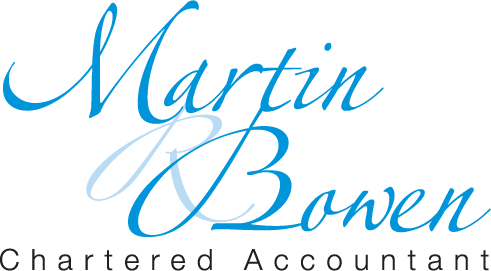Business Structure
There is no ideal business structure, as all structures have advantages and disadvantages. There may be benefits in using various types of structures. We can assist you with the following:
- Decide on the most suitable structure for your business - Sole trader, partnership, company or trust
- Prepare a business plan, cash flow projections, budgets, and trading forecasts
- Apply for an Australian Business Number and other registrations with the ATO
- Complete registration procedures with the Australian Securities and Investments Commission
- Deal with company secretarial issues
- Choose an accounting system
Sole Trader
A sole trader is the simplest business structure.
A sole trader pays tax at their marginal rate, based on their taxable income. If a person is paid for their skill, knowledge or experience then the personal service income rules need to be considered. If there is a loss from a business venture then the non-commercial loss rules may apply.
One disadvantage of a sole trader is that all assets (except superannuation) are available to pay creditors.
The advantages of a sole trader include:
- Owner has complete control of the business
- Low cost to establish
- Can use a business name
- Access to the capital gains tax discount
- Access to the small business capital gains tax concessions (provided that the relevant conditions are satisfied)
- Access to the small business tax concessions (provided that the relevant conditions are satisfied)
- Easily understood
- Trading losses can be offset against other income, subject to the non-commercial loss rules
- Personal tax rate may be lower than the corporate tax rate
- Eligible for the small business tax offset of up to $1,000, on small business income
Disadvantages of a sole trader include:
- No income splitting
- Cannot salary package
- Unlimited liability (ie all assets are available to meet creditors, except superannuation)
- Need to satisfy the substantiation provisions
- The personal services rules may apply
- The non-commercial loss rules may apply
Partnership
A partnership is relatively inexpensive to set up. A partnership is the relationship between persons carrying on business with a view to profit.
A partnership is governed by the Partnership Act, but it is usually recommended that a partnership agreement be prepared by a lawyer.
A partnership lodges a tax return each year, but the partnership does not pay tax. The taxable income of the partnership is distributed to the partners in the proportions designated in the partnership agreement (or if no written agreement- equally between the partners). The partners includes their share of the income of the partnership in their tax returns. A partnership can be between individuals, trusts or companies.
If a person is paid for their skill, knowledge or experience then the personal service income rules need to be considered.
Partners are jointly and severally liable for partnership debts.
The advantages of a partnership include:
- Providing flexibility of income distributions through salaries and partnership agreement. However, the income can only be split with partners
- Low cost to set up
- Can use a business name
- Access to the capital gains tax discount where the partner is an individual or trust
- Access to the small business capital gain tax concessions, but the eligibility is determined at the partner level (provided that the relevant conditions are satisfied)
- Access to the small business tax concessions (provided that the relevant conditions are satisfied
- Losses can be offset against other income, subject to the non-commercial loss rules
- Easy to admit partners and rollover relief is potentially available for trading stock and depreciating assets
- Easily understood
- Asset protection can be obtained if trusts, with corporate trustees, are used as partners (albeit with increased compliance costs)
- Each partner eligible for the small business tax offset of up to $1,000, on small business income
The disadvantages of a partnership include:
- The personal services income rules may apply
- The non-commercial loss rules may apply
- Taxation of capital gains to partners on change in fractional interest, including a change in the composition of the partnership
- Need to satisfy the substantiation provisions
- Unlimited liability, depending upon the type of partner
- Partnerships are governed by State legislation
- A partnership does not provide for the easy passing of control between generations.
Company
A company is a separate legal entity and pays tax at 28.5% where it is a small business, otherwise 30%.
A company may also provide asset protection, expect where the company trades whilst insolvent. Directors are also liable for unpaid PAYG Withholding and superannuation obligations. A company structure provides limited liability as the liability of shareholders in limited to the amount paid for their shares.
A company pays tax on its taxable income. If these profits are distributed to shareholders in the form of dividends, then the shareholder will pay tax on the dividends received. The shareholder may also get a credit for tax paid by the company (a franked dividend).
If a company's income is characterised as personal services income, that income is taxable to the person whose skills and efforts it is rewarding even if it is paid to a company that the person controls.
A loan (or payment) to a shareholder or associate may be treated as an unfranked dividend. The loan either needs to be repaid prior to the lodgement of the company's tax return, or a loan agreement needs to be entered into. The loan agreement is usually for a term of seven years and requires annual repayments which include interest and principal. The Taxation Office publishes the interest rate each year. The private use of company assets may also be treated as an unfranked dividend.
A company is not able to access the 50% capital gains tax discount.
Losses made by a company are carried forward to be offset against future income, subject to certain tests.
The advantages of a company include:
- Taxation of income at a flat rate
- Profits can be retained, provided that it is not personal services income
- Limited liability
- Shareholders obtain the benefit of tax paid by the company where the company pays a franked dividend. The shareholder can obtain a refund of the tax paid by the company, depending upon their other income.
- Can utilise salary packaging
- Access to the research and development concessions
- Access to the small business capital gains tax concessions (provided that the relevant conditions are satisfied)
- Access to the small business tax concessions (provided that the relevant conditions are satisfied)
- A company has an unlimited life and can provide for succession planning
The disadvantages of a company include:
- The company is taxed at a flat rate of tax, even on low levels of income
- Distributions are treated as dividends and additional tax may be payable
- Cannot access the 50% capital gains tax discount
- More expensive to establish
- Higher administration costs
- Companies are regulated by the Corporations Act and ASIC
- Loans and payments to shareholders and associates may be taxed as unfranked dividends
- The private use of company assets may be taxed as an unfranked dividend
- Cannot stream franked and unfranked dividends
- Losses are retained in the company
- Benefits may be subject to fringe benefits tax
- Directors may be liable for the debts of the company, unpaid superannuation contributions and unpaid Pay As You Go Withholding
- The overall tax legislation that applies to companies is more complex
- Income may be subject to personal services income rules
Trusts
Trusts are advantageous from a structuring perspective as they can provide asset protection and also allow the streaming of income and capital to beneficiaries.
A trust is not a separate legal entity, but should be characterised as a documented relationship subject to trust law. The rules for the trust are documented in the trust deed, which is prepared by a lawyer. it documents the relationship between the person who created the trust by giving trust property (the settlor), the person(s) who operate the trust property (the trustee) and the person(s) who may benefit from the trust by receiving income and/or capital distributions (the beneficiaries). The beneficiaries can be individuals, trusts or companies. However, complex rules apply where distributions are made to trusts or companies.
A key feature of a trust is that there is a clear distinction between the legal ownership of the property, which is held by the trustee, and the equitable ownership of the property, which is held by the beneficiaries.
There are various types of trusts, but the most common tend to be discretionary trusts and unit trusts. A discretionary trust is one where the entitlements of the beneficiaries are not fixed. The trustee can resolve each financial year how the income will be distributed among the group of potential beneficiaries as set out in the trust deed. A unit trust is a trust where the entitlement to the income and capital of the trust are fixed in proportion to the number of units held by the beneficiary.
A discretionary trust is often used in family dealings. A unit trust tends to be used where unrelated parties are involved. A partnership of discretionary trusts is also often used by unrelated parties.
If a trust's income is characterised as personal services income, that income is taxable to the person whose skills and efforts it is rewarding, even if it is paid to a trust.
The advantages of a trust include:
- Limited liability (provided a corporate trustee is used)
- Flexibility as to the distribution of income, particularly for a discretionary trust
- Access to the capital gains tax discount
- Access to the small business capital gains tax concessions (provided that the relevant conditions are satisfied)
- Access to the small business tax concessions (provided that the small business tax concessions are satisfied)
- Each beneficiary eligible for the small business tax offset of up to $1,000, on small business income
- Can utilise salary packaging
- It is possible to change the control of the trust from one generation to the next without transferring the underlying asset
The disadvantages of a trust include:
- Accumulated income taxed at the top marginal rate
- Losses cannot be distributed and are subject to complex rules
- A trust usually has a life of 80 years
- Difficult to understand
- The trustee can be personally liable for the debts of the trust
- Distributions must be made in accordance with the deed
- Complex rules if distributions are made to a company
- Complex rules if the trust holds shares
- Depending upon the type of trust, it may be more difficult to satisfy the significant individual and CGT concession requirements
- Benefits may be subject to fringe benefits tax
- More expensive to establish
- Higher administration costs
Self Managed Superannuation Fund
A self managed superannuation fund has less than 5 members, and all members must be trustees, or directors of the corporate trustee. A self managed superannuation fund must be set up for the core purpose of providing retirement, death or termination benefits, although it may be carried on for the purpose of providing ancillary benefits. This test will be breached if the fund carries on a business activity, makes assets available fort he personal use of members, or provides benefits to a member before a condition of release is satisfied.
The trustee must formulate and give effect to an investment strategy, including insurance.
Investments must be on an arm's length basis, and a fund cannot borrow, except in limited circumstances. The fund must also not make loans to members, or provide financial assistance to members, or a relative of a member. The trustee of a fund must not intentionally acquire an asset from a related party unless it is a listed security, business real property or certain other exceptions.
The income of a self managed superannuation fund is generally taxed at 15%. Capital gains may be eligible for the one-third discount. If a fund is wholly in pension phase, then no tax is payable. A self managed superannuation fund can also receive a refund of franking credits.
The advantages of a superannuation fund include:
- Low rate of tax - income is generally taxed at 15%
- If a fund is wholly in pension phase, then no tax is payable
- Sheltering of tax on contributions where there are excess franking credits
- Access to the one-third capital gains tax discount
- Assets sold when the fund is in pension phase are not subject to tax
- A superannuation fund can accumulate income
The disadvantages of a superannuation fund include:
- Cannot access the small business capital gains tax concessions
- Legislation subject to change
- Non complying funds are taxed at the top marginal rate
- Complex rules on administering a fund
- Restrictions placed on use of funds
- Losses cannot be distributed
- Restrictions on borrowings, subject to some exceptions
Our Services
We provide accounting, taxation and superannuation fund advice including income tax, fringe benefits tax, estate planning, capital gains tax and GST.
Resources
View our handy online tools and resources featuring key dates, tax facts, useful links and online calculators.
About Us
We aim to provide advice that you can understand and implement. Our goal is to simplify tax as it applies to your specific situation.



